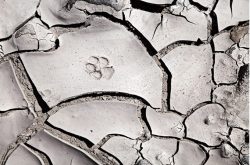
The Southwest has always faced periods of drought. Most recently, from late 2011 to 2017, California experienced years of lower-than-normal rainfall.
El Niño is known to influence rain in the Southwest, but it’s not a perfect match. New research from the University of Washington and the Woods Hole Oceanographic Institution explores what conditions in the ocean and in the atmosphere prolong droughts in the Southwestern U.S.
The answer is complex, according to a study published Aug. 6 in the Journal of Geophysical Research: Atmospheres, a journal of the American Geophysical Union.
“What causes droughts that last for decades in some parts of the world, and why does that happen? Can we predict it?” said first author Luke Parsons, a UW postdoctoral researcher in atmospheric sciences. “Our study shows that when you have a large El Niño event, and a La Niña event is coming next, that could potentially start a multiyear drought in the Southwestern U.S.”
The general rule of thumb had been that El Niño years — when the sea surface in a region off the coast of Peru is at least 1 degree Celsius warmer than average — tend to have more rainfall, and La Niña years, when that region is 1 degree Celsius cooler than average, tend to have less rain. But that simple rule of thumb doesn’t always hold true.
Read more at UW News »
